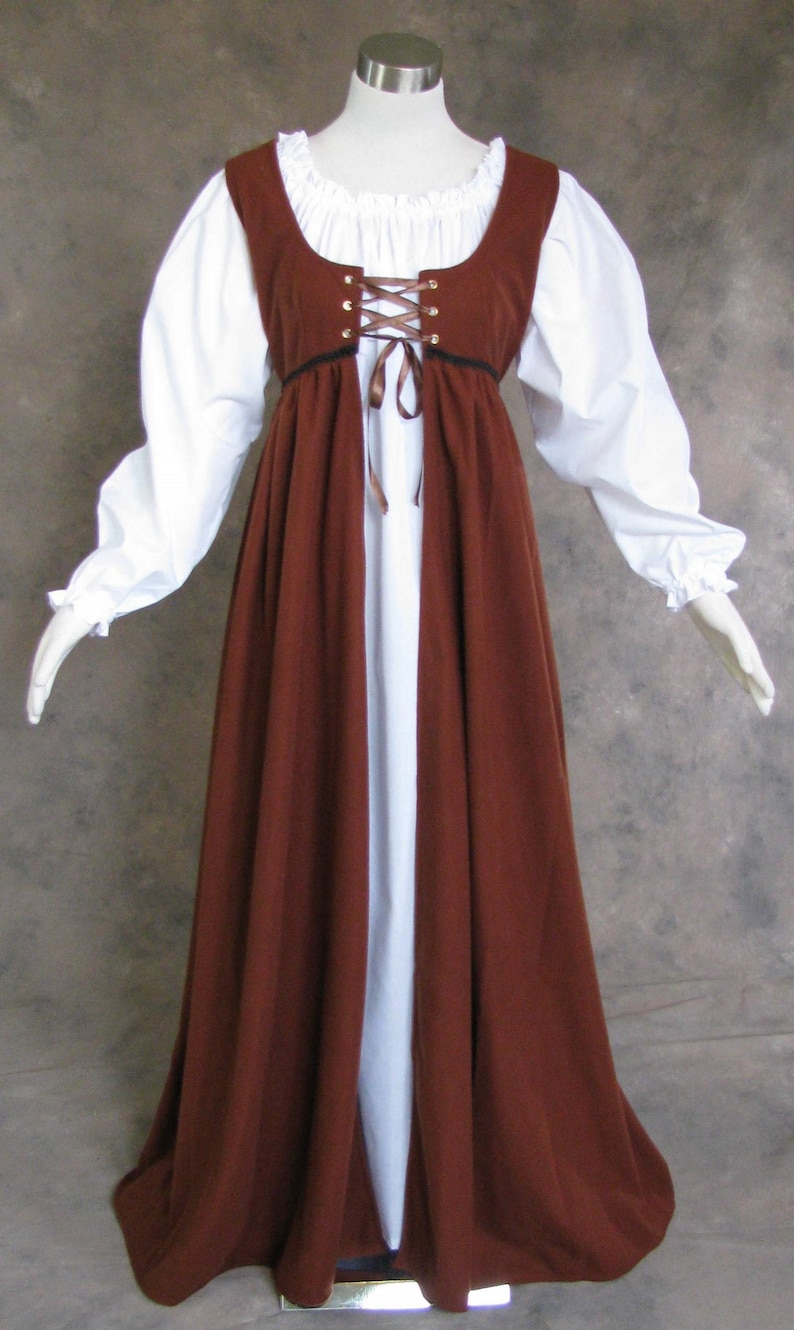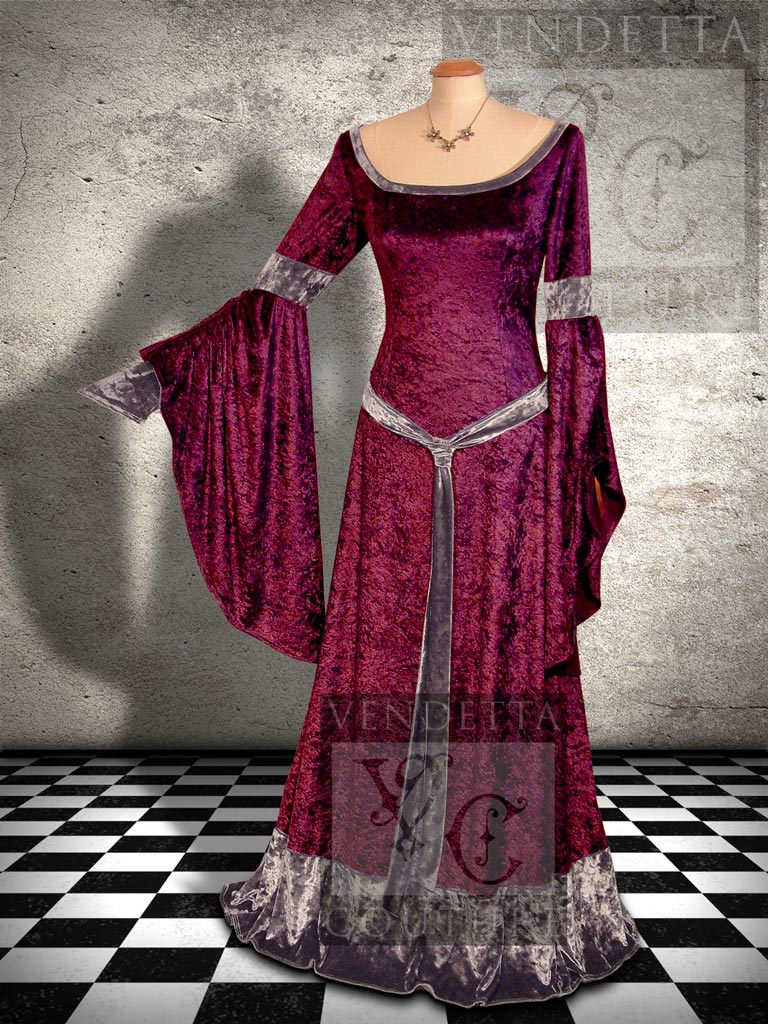
Whereas clothes earlier had been relatively loose-fitting and covered much of the body, the design of these dresses changed to follow the lines of the body more closely. Then as the Renaissance started to pick up steam, things really took off. Silks and velvets became more available, allowing for clothes to really take off as a status symbol. The Dawn of the Renaissance After the Crusades, things slowly started to change, especially among the wealthy. Like other periods, this was often worn with a sleeveless surcote atop it. Later on, the kirtle may have a slit at the bodice which was laced up. This kirtle, or tunic, could be slipped on over the head. A belt was worn at the waist which did provide some shape. The kirtle that women wore was akin to a loose, long tunic and wasn’t fitted to the body. Early Medieval Dresses In the early medieval times, clothing was comparatively simple. However, the dress is a great starting point for both the medieval woman and for a medieval dress costume. Obviously, your typical medieval woman wouldn’t only wear her dress, she’d also wear the other accessories needed to complete the look. While they looked different as time went on, this layered construction lasted for centuries. These are the basic layers of a medieval dress. It would also provide an extra layer of warmth, if needed.

The surcote was generally intended to protect the often finer and more expensive kirtle underneath, either from the work that a poorer woman would be putting up with, or from the travel of a wealthier woman. This outer layer of a surcote again showed some variation. These had several names but were commonly known as surcotes (or surcoat, medieval people couldn’t spell). However, many kirtles were underneath yet another layer, which would be the over-gown or dress itself. The kirtle could be the final layer of a medieval woman’s dress, depending on how it was designed. The kirtle would be secured with either lacing or buttons and could be either sleeved or not. The design of this garment did change through the times, but the purpose was the same. Over this shift would be a long tunic, known as a kirtle. Those who couldn’t afford linen would have to go without, or just wore a smock made using coarser materials, such as hemp. Linen was a comparatively gentle material against the skin. The smock, or shift worn underneath the women’s dresses was commonly made of linen.

Don’t worry, we promise not to judge if you decide to wear modern underwear while in costume. People at this time didn’t wear underwear as most of us do, but it was common for women to wear a smock beneath their dress. The Basic Construction of the Medieval Dress Medieval dresses were a relatively layered affair, for rich and poor alike. However, there were many variations to be seen in this basic design as the medieval time progressed. The biggest difference between peasant’s clothing and that of a richer medieval woman, especially before the Renaissance, was the material and quality of workmanship used in the dress. What we think of as the women’s medieval dress had a very basic design that lasted for many years and was shared by rich and poor alike. It wasn’t the same level as it is today, where something wildly fashionable one year is frankly embarrassing the next, but it was at the point where an expert could potentially be able to determine both the decade and area where a late medieval outfit originated. As time went on, new trends were introduced. But more importantly, the Renaissance began, and with it, fashion exploded.

Trade and war had brought over more fabrics of better quality from the East, introducing silks and velvets. Tailoring practices started to improve, which allowed for more complex designs. However, during the 14 th century, several things changed. Up until about the 13 th century, clothing was a relatively drab and boring affair. The medieval time period is considered to have lasted about a thousand years, from the 5 th century to the 15 th century. The Design of the Women’s Medieval Dress The middle ages were an interesting time for fashion. You can either scan through our selection to find the perfect dress or decide to create different costumes for multiple characters.

These different types of dresses are very useful when it comes to creating a medieval dress costume for LARPing. Because of that, we have considerably more than one kind of medieval dress for sale. There are also changes in the styles of different time periods, because the medieval time period lasted for hundreds of years, bleeding into the Renaissance. Class differences play a part in this, as a medieval peasant dress would look comically different from a royal medieval dress. The Middle Ages are no exception to this, but medieval dresses have a massive amount of variety. As you are almost certainly aware, women throughout history wore dresses.


 0 kommentar(er)
0 kommentar(er)
